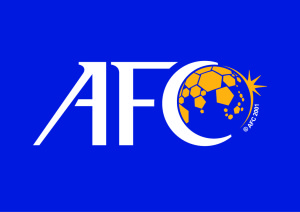By Samindra Kunti
January 5 – On a Saturday night in December jeeps and cabs briskly maneuvered and zigzagged their way through dense traffic on Hazza Bin Zayed Street, one of Abu Dhabi’s arteries. They were heading for the Al Wahda Mall, an architectural monstrosity in the UAE capital’s Al Nahyan neighborhood. Affluent expats and local Emirati sauntered into the complex to indulge in the luxuries offered by Western brands including Calvin Klein, Armani and Tommy Hilfiger.
Few shoppers neither realised nor bothered that the proprietors of the shopping center, and an adjacent hotel, were playing in their last home game of 2016 against Al Sharjah in the Arabian Gulf League, the UAE’s domestic league, within walking distance from the mall.
The match didn’t carry great importance with the hosts Al Wahda in mid-table and the visitors lingering just above the red lantern. Mohamed Al Akberi scored the lone goal of the game with a fine header on 11 minutes, but, for former Arsenal player Denilson showing flashes of skills apart, the 90 minutes were muddled in mediocrity.
As Al Sharjah struggled to find their way back into the game, the PA announcer revealed an attendance of 2113, a hugely inflated number from a smattering of fans inside the bowl-shaped Al Nahyan stadium. Locals sipped mango juice in the VIP seats; across from the main stand 30 or 40 fans incessantly sang ‘Al Wahda, if you win or lose, we love you.’
HH Sheikh Diab bin Zayed Al Nahyan props up Al Wahda, but the correlation between his power and the club’s spending power can’t mask the club’s shortcomings. They have attracted a controversial coach in Javier Aguirre and both Denilson and Jorge Valdivia, the club’s star players, are aging. They may earn €3-5 million per annum; Al Wahda’s official budget and salaries are not published.
Goalscorer Al Akberi represents the future for both Al Wahda and the UAE. The Emirate had an outstanding 2015 courtesy of its golden generation. Those players first emerged on a global stage at the 2012 London Olympic Games, when they recorded a 1-1 draw with Senegal in the group stages. Under the guidance of national coach Mahdi Ali this group has moved all the way through the youth teams led by Al Ain playmaker Omar Abdulrahman, Al Jazira striker Ali Mabkhout and 2015 AFC Player of the Year Ahmed Khalil. They achieved remarkable results, lifting the 2013 Gulf Cup and claiming the bronze medal at last year’s Asian Cup.
At club level Al Ahli bounced back from a poor domestic title defense to reach the final of the AFC Champions League, Asia’s flagship club tournament. Romanian Cosmin Olaroiu, a doyen of Middle East-based coaches, formed a solid team with Brazilians Everton Ribeiro and Rodrigo Lima starring, but ultimately Al Ahli folded against Luiz Felipe Scolari’s Guangzhou Evergrande 2-0 on aggregate.
The talent pool in UAE football and the continuous delivery of results points at sustained and credible grassroots development, but that might be a moot point. The local FA proudly highlight recent results as the justification for their work, but a lack of long-term planning could hinder football’s progress in the UAE.
This month’s U23 Asian Cup hosted by Qatar will be a benchmark for a new generation of UAE players spearheaded by Al Jazira playmaker Khalfan Mubarak. The UAE have been drawn in group D with Australia, Vietnam and Jordan. If they want to return to the Olympic stage and kick off another great cycle for UAE football, they will have to finish among Asia’s top three to do so.
Contact the writer of this story at moc.l1744887336labto1744887336ofdlr1744887336owedi1744887336sni@n1744887336osloh1744887336cin.l1744887336uap1744887336


